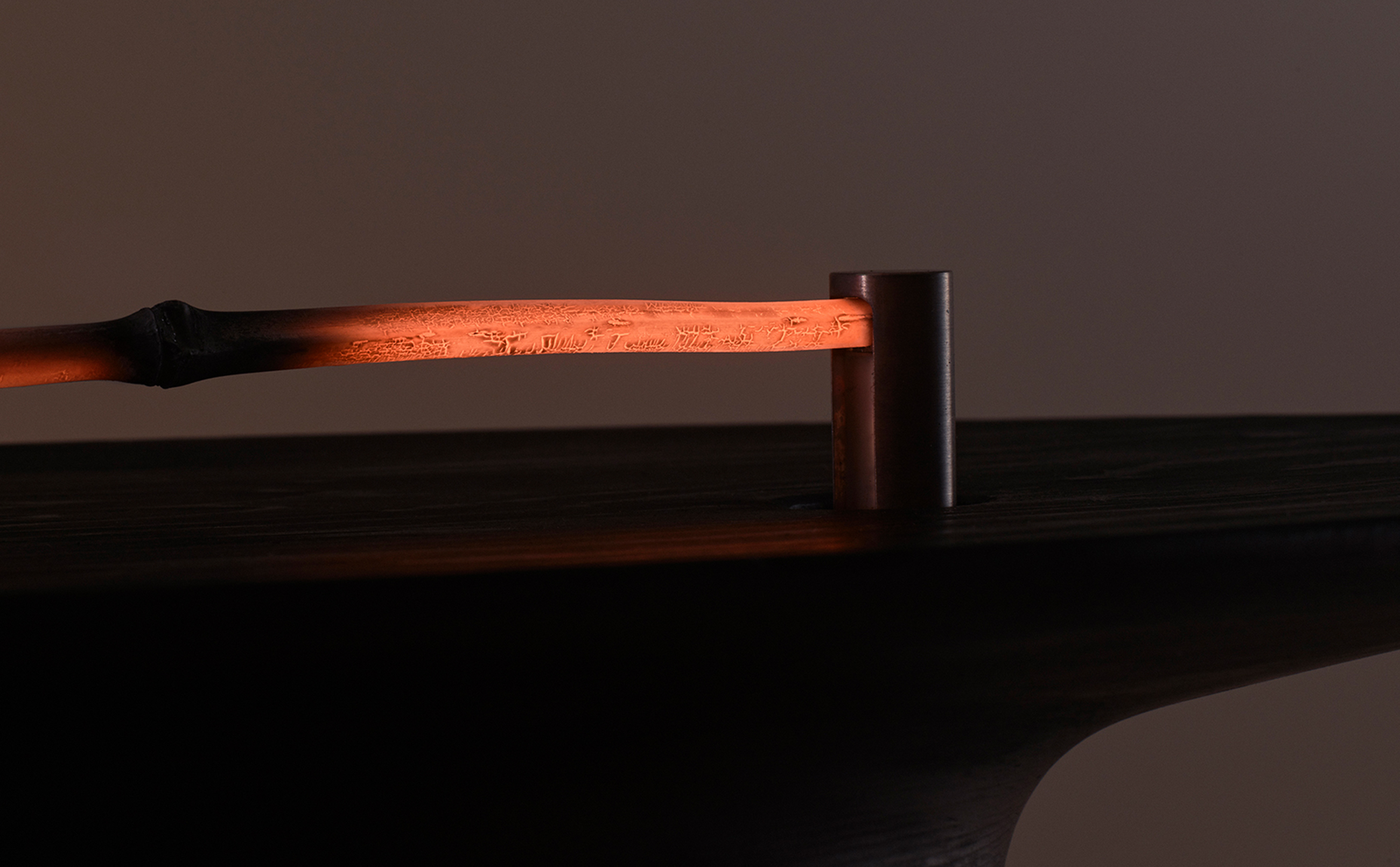How Japanese Sensibilities and Manufacturing Concepts
Make Future Living More Fulfilling
Kyoto KADEN Lab is a co-creative project to create a more fulfilling future by searching for the origins of Japanese sensibilities and ways of making things.
"Electronics Meets Crafts: Engraving Phenomena" is the second iteration of Panasonic's collaboration with GO ON, a creative unit composed of successors to Kyoto's artisanal traditions. It emerged from a quest not merely for materials and technologies but also for experiences that people find comforting.
The project is a search for value created by generations of artisans over uncounted ages, value that leads to a higher, unchanging level of fulfillment.
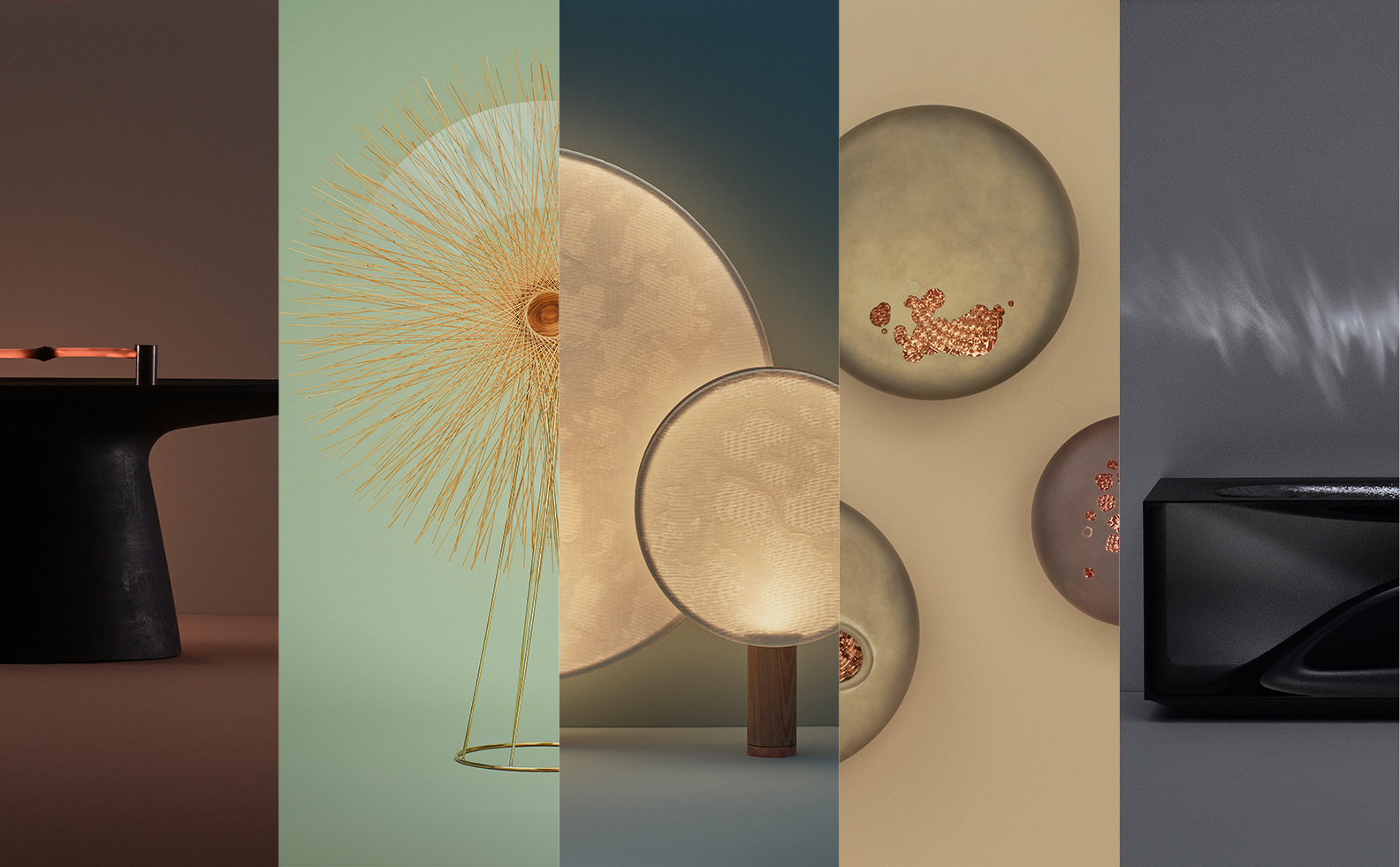
Fire that burns the deepest red
Breezes that blow past and through
Gentle beams of filtered light
Light that moves as if alive
Water that trembles with every sound
When we connect with these timeless natural phenomena, we find beauty and comfort. We have sought out the electronics of the future, taking as our starting point these experiences that touch the soul, to express five phenomena that lead to experiences.
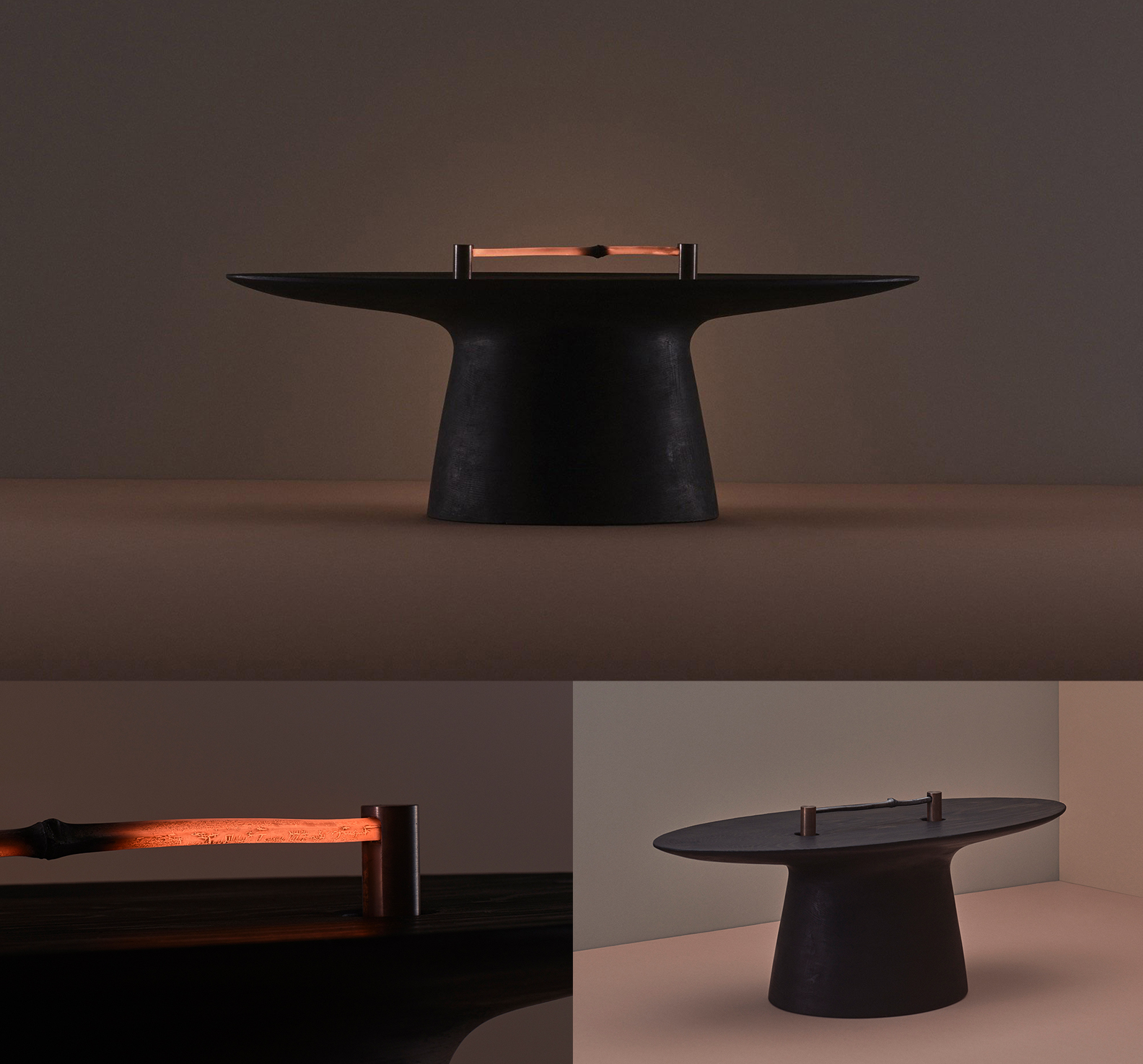
Hi to toki
"Relaxing time spent gazing at the flickering embers."
A light that reproduces the sound of logs crackling in the fire and the ever-changing shape of the flame and generates heat to invoke a sense of immense energy. People have long sought comfort from and saw beauty in fire, but fire has begun to disappear from our lives. And likewise, the unparalleled beauty of the flames and the time spent comfortably gazing into the flames may also be disappearing. Through electronics, we wanted to reintegrate fire/flames into people's lives, to reawaken the sensation we have started to forget. By combining Edatakesumi (bamboo charcoal) with electrical control technologies, this work beautifully reflects the glowing embers in their natural state and the beguilingly crafted charcoal vessel, creating a moment of soothing comfort as we gaze at the fire's glow.
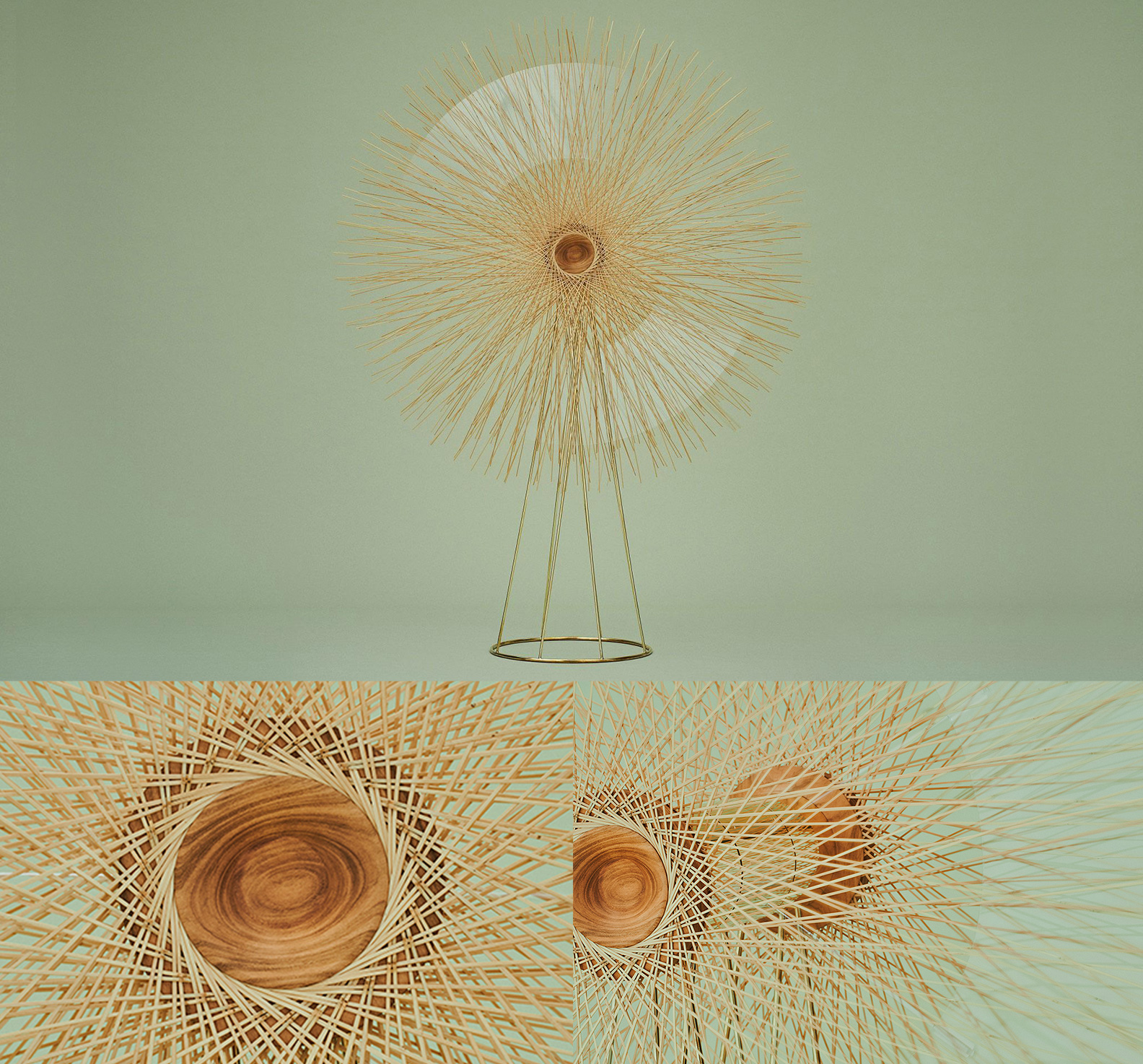
Soyo gu
"Heart warming gentle breeze."
A large ventilation fan with a soft bamboo cover made using bamboo basket weaving techniques. The fan creates a gentle breeze through the woven bamboo basket. Panasonic has reproduced the pleasant sensation of a gentle breeze by combining technologies with bamboo craftsmanship focusing on the following 3 elements: “the feeling of the gentle breeze from head to toe," “silence" and “the image of flowers and grass swaying in the wind."
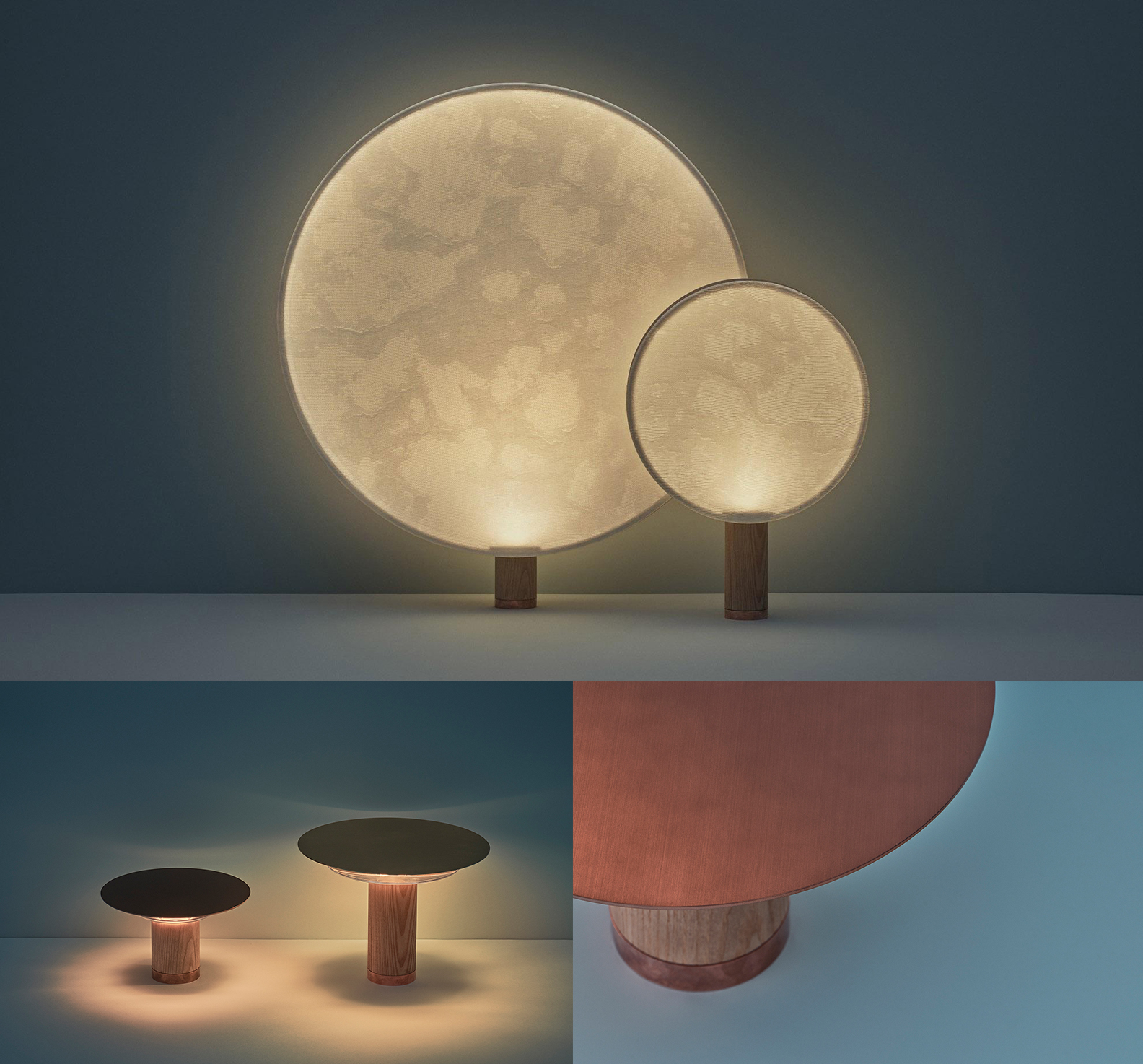
To gaku
"Enveloped by comfortable light"
The interaction and relationship between light and space in Japanese architecture is different from that of the rest of the world. Japanese architecture transforms strong sunlight into a "faint, smooth and gentle light" by reflecting and passing it through the furnishings and fittings that make up the space, thereby creating a comfortable living environment. For example, light that filters through paper screens becomes smooth and disperses across vertical surfaces, or becomes a pale, glossy light that absorbs the lustrous colors of the sliding doors and folding screens. This prototype easily reproduces such light by combining the lighting unit with different parts. The light unit is battery powered, so it can be placed anywhere, not only on traditional surfaces like walls and ceilings. In this way people can easily enjoy a comfortable, nostalgic light however their lifestyles may change.
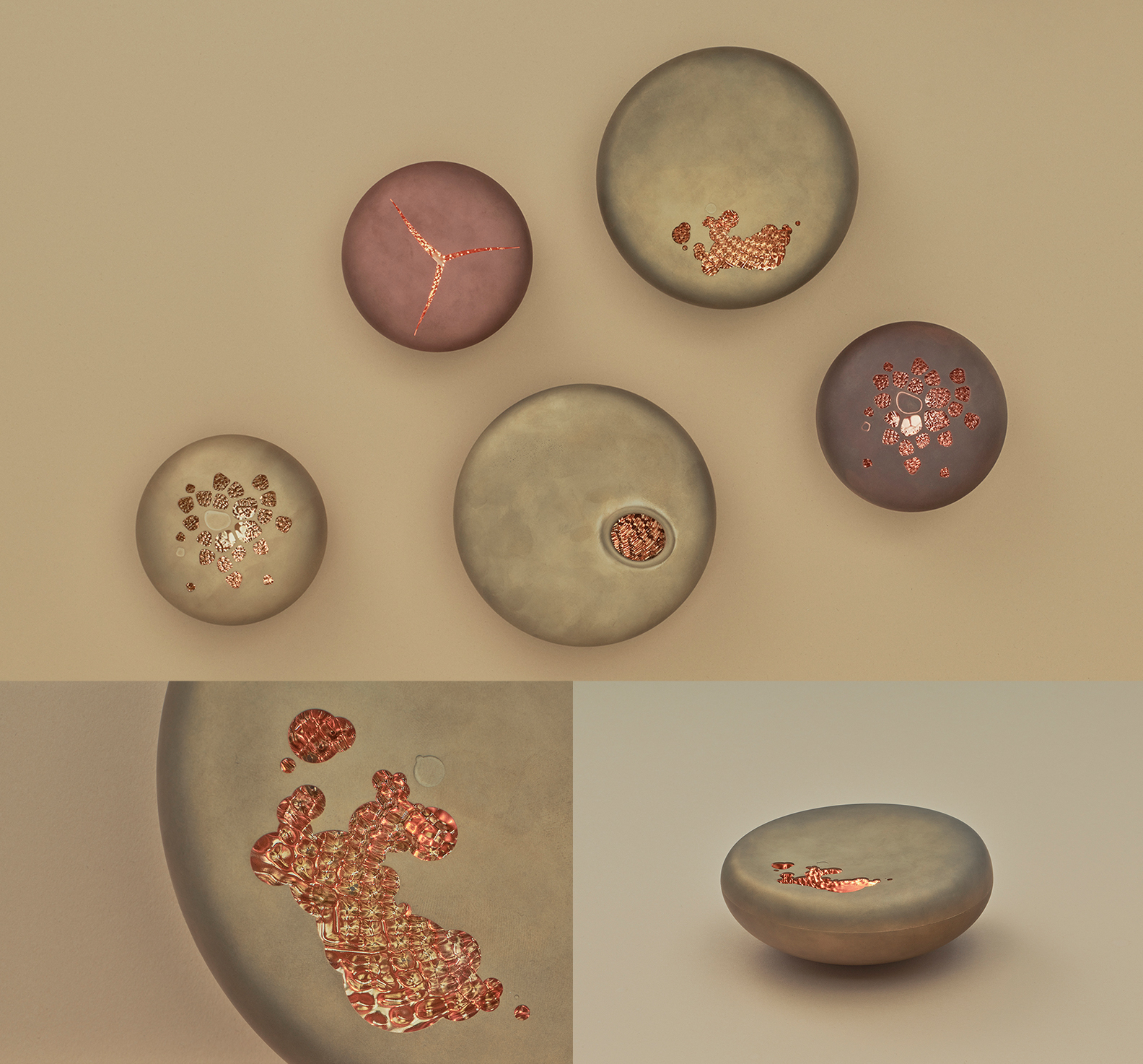
Kasa
"A light that influences the way people act by responding."
This light turns off when stimulated. Like a living creature, when people approach it suddenly or handle it roughly, it shuts off. This response creates a new relationship between people and objects. Rather than reinforcing it repeatedly so that it will not break, by encouraging people to treat objects with care, the objects will last longer without breaking. And this may offer an opportunity to rethink manufacturing or change people's behavior. The aim is to create an experiential probe into the future relationship between people and objects.
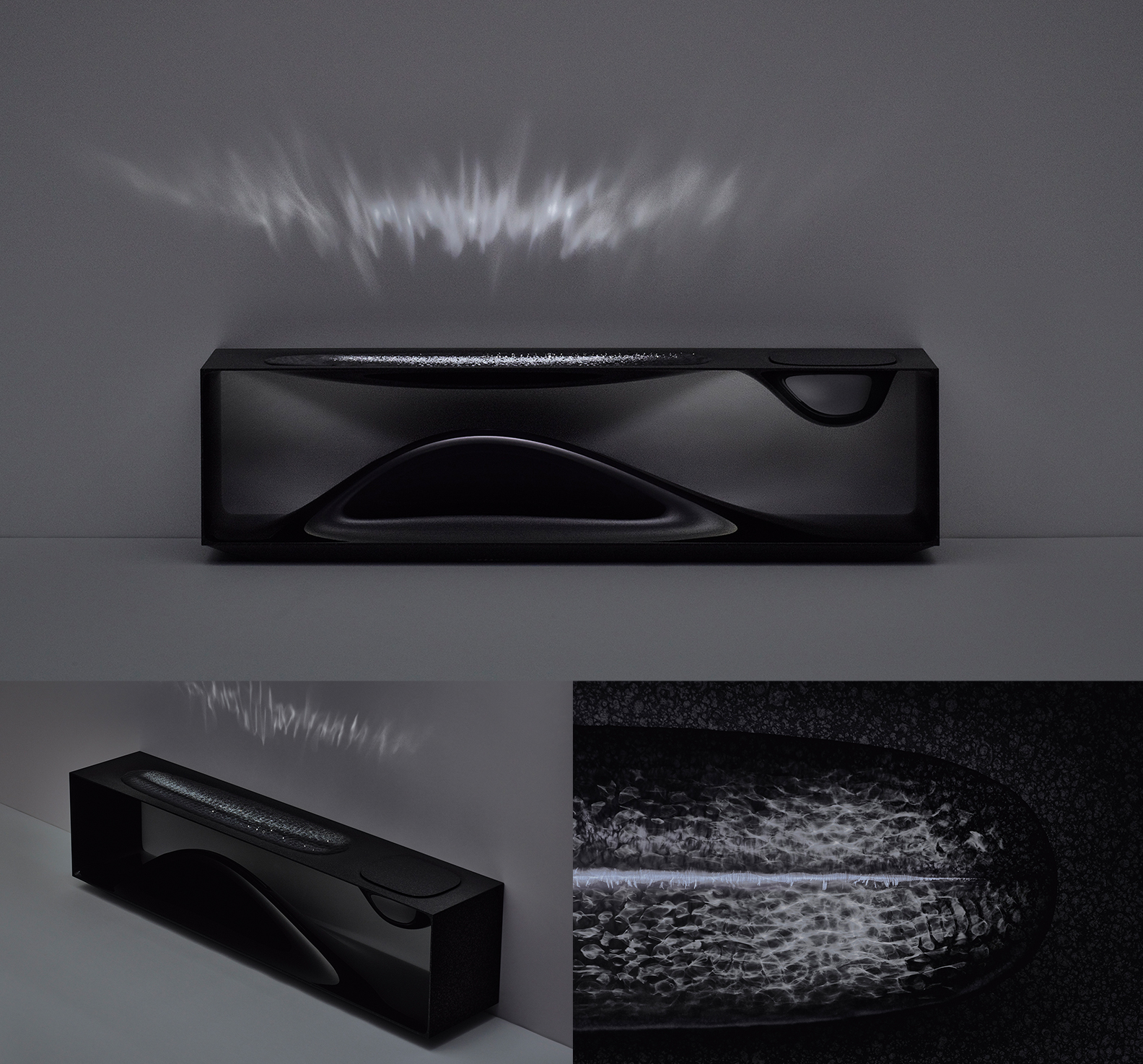
Oto no kotowari
"Captivating sound of water ripples."
By gazing at the sonic ripples created by vibrations, water, and light, we feel the subtle changes in sound and resonance. In today's world, with the spread of internet music streaming services and the like, people live their lives against an ever more varied backdrop of sounds. To reach the next level in richer living, we must instead bend our ears to each and every sound in our lives. Panasonic's aim with this prototype is to stimulate sight, the sense that captures the greatest amount of information, providing an unforgettable experience that will carve sounds into people's memories.

